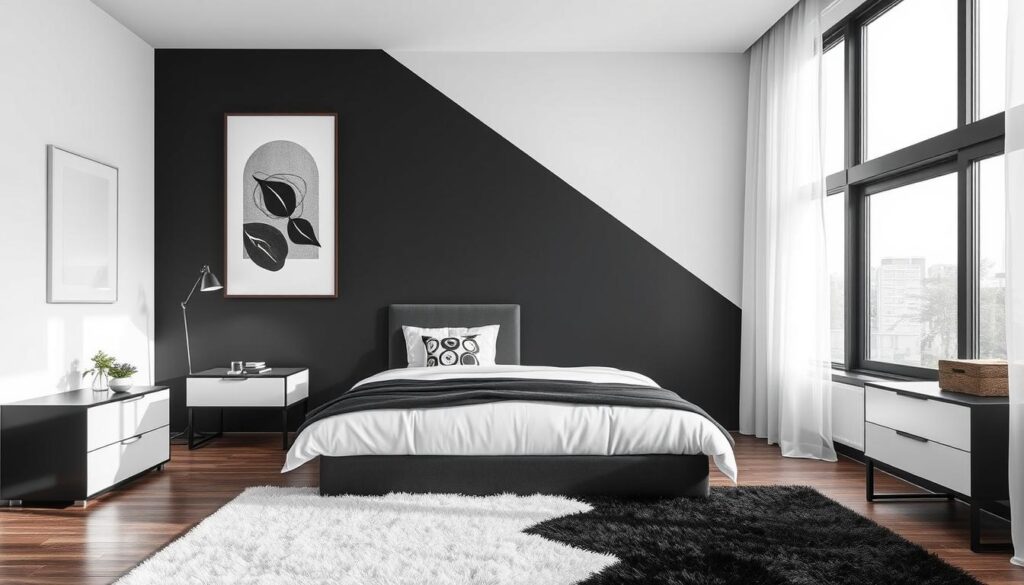Monochrome interiors remain one of the most striking ways to achieve a sleek, modern home. Instead of juggling too many colors, this style narrows the palette to black, white, and shades of gray, creating a strong sense of order. Yet, it doesn’t feel boring – when done right, monochrome interiors are layered, textured, and timeless.
Key Points
- A monochrome palette offers clarity, sophistication, and long-term appeal.
- Black, white, and gray form the foundation, while textures prevent flatness.
- Accents – wood, metallics, greenery – add personality without breaking the scheme.
- Lighting and furniture choices make or break the balance.
- The style works in every room, from kitchens to bedrooms.
Why Monochrome Fits Modern Homes
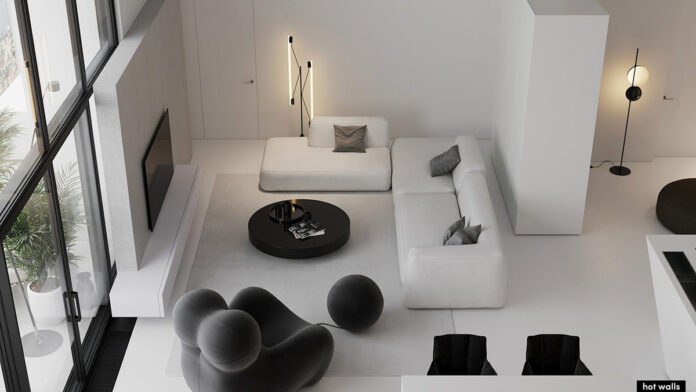
What makes monochrome so appealing in modern design is its balance between simplicity and boldness. Today’s homes need to be functional yet inviting, minimalist but not empty. A restricted palette naturally reduces clutter, giving every piece of furniture or décor a deliberate role.
Think of a monochrome home as a curated gallery: every line, material, and silhouette matters more because there’s no distraction from loud colors. This focus helps homeowners achieve an environment that feels calm, structured, and undeniably modern.
The Foundation: Black and White Harmony
Every successful monochrome design begins with the interplay between black and white. White walls usually act as the canvas, while darker tones bring contrast and grounding.
Instead of treating black as heavy or overwhelming, consider it the anchor of your design. For example:
- Black-framed windows give sharp definition against white walls.
- A bold black sofa becomes the centerpiece, while surrounding white space ensures it doesn’t feel bulky.
- Subtle accents, like black handles on white cabinetry, add rhythm and continuity.
One of the easiest ways to incorporate this balance is through carefully selected black furniture. A black dining table or bookshelf instantly adds depth and modernity, and because it pairs well with both glossy and matte finishes, it provides flexibility as your home evolves.
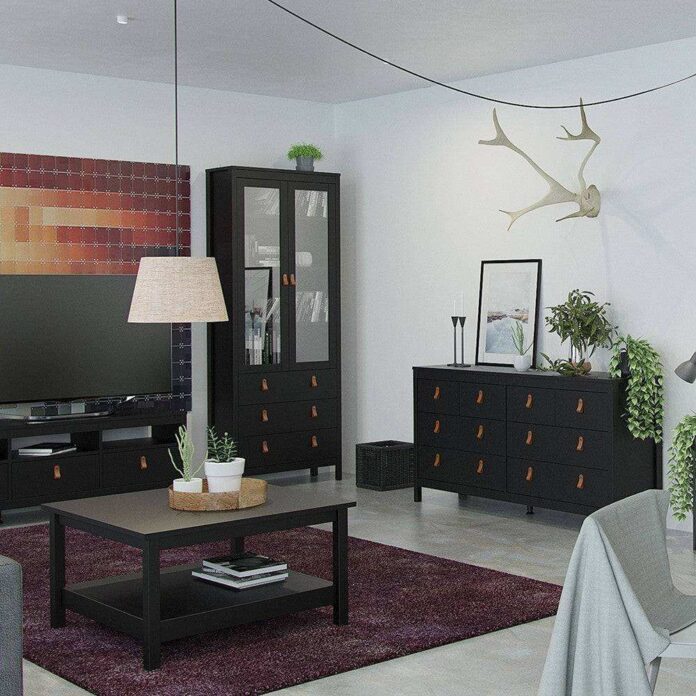
Shades of Gray as the Bridge
If black and white are the bookends, gray is the text that fills the story. Without it, contrasts can feel stark or even cold. Gray softens the space and adds tonal variation that makes interiors more livable.
Imagine a living room with white walls, black coffee tables, and soft slate-gray sofas. Instead of the eye bouncing between two extremes, gray connects the elements, making the room flow effortlessly.
Some great uses for gray include:
- Flooring choices: A warm gray wooden floor balances cool-toned walls.
- Kitchen cabinetry: Mid-gray cupboards prevent the space from feeling clinical.
- Textiles: Gray throws, cushions, or rugs layer softness onto harder surfaces.
The trick is to mix different tones—charcoal against pale gray, matte against glossy—so that the room has texture even before you add accessories.
Texture: The Hidden Dimension
Relying only on color can leave a monochrome home flat. That’s why texture is the designer’s secret weapon. By playing with surfaces, you can create depth while still respecting the single-color palette.
Think about a dining space: polished black marble on the table, soft upholstered chairs, and sheer gray curtains filtering the light. The palette hasn’t changed, but the room feels alive because of the tactile contrasts.
Some combinations that work beautifully:
- Concrete with wool rugs – industrial meets cozy.
- Glossy cabinets beside matte walls – a subtle play of light reflection.
- Metallic finishes with stone surfaces – introducing shine without color.
Texture gives personality without breaking the monochrome rules.
Subtle Accents That Enhance, Not Distract
Monochrome doesn’t mean “no color forever.” In fact, tiny accents can heighten the effect of the base palette. The key is restraint – use them sparingly and deliberately.
Consider these examples:
- Natural wood: A pale oak coffee table or walnut shelf softens harsh contrasts.
- Plants: A single leafy plant in a black ceramic pot provides freshness without clutter.
- Metallics: Gold, copper, or chrome lighting fixtures make neutral spaces look luxurious.
- Artwork: Black-and-white photography framed in black ties back into the scheme while adding culture.
The idea is to support the monochrome palette, not compete with it.
Room-by-Room Monochrome Ideas
A monochrome approach can be adapted differently depending on the room:
Living Room

Balance is key. A large white sectional sofa can dominate the space, but grounding it with a black rug or entertainment unit prevents the room from feeling washed out. Gray textiles then provide softness.
Kitchen
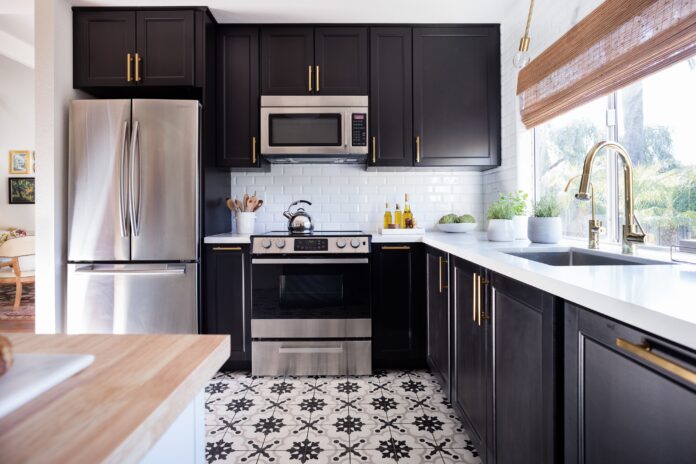
Few kitchens look as striking as black cabinetry paired with crisp white counters. Add in matte fixtures and stainless steel appliances, and you have a space that feels sleek but highly functional.
Bedroom

This is where layering becomes essential. White bedding as a base, gray pillows for variation, and a charcoal blanket for depth. Lighting should be soft—black lamp bases with warm bulbs add coziness.
Bathroom
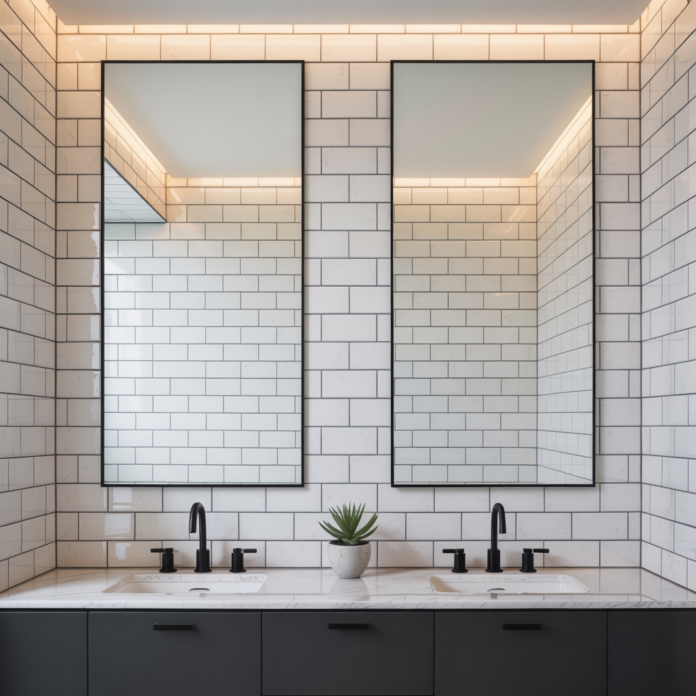
A classic choice is white subway tiles with black grout. Pair with matte black taps and mirrors for a modern spa-like environment. For luxury, add a stone basin or concrete flooring.
Avoiding Monochrome Mistakes
Monochrome is sleek, but it can tip into sterile if not handled carefully. A few pitfalls to avoid:
- Harsh contrasts everywhere: Too much black against too much white makes spaces feel sharp and unfriendly. Gray helps mediate.
- Ignoring lighting: Darker interiors need layered light sources – spotlights, pendant lights, and floor lamps – to prevent gloom.
- Over-accessorizing: Clutter fights against the whole philosophy of monochrome. Choose fewer, higher-quality pieces.
Being mindful of these points ensures your monochrome home feels refined, not oppressive.
Why It Remains Timeless
Unlike color trends that fade quickly, monochrome has always been part of interior design history. The reason? Black, white, and gray are foundational colors – they never go out of style. A monochrome living room designed today can look just as relevant ten years from now, with only minor updates like textiles or lighting.
This timelessness makes it not only stylish but also practical. You won’t need to overhaul your entire home with each passing trend. Instead, you can keep your base palette intact and refresh around it.
Final Thoughts
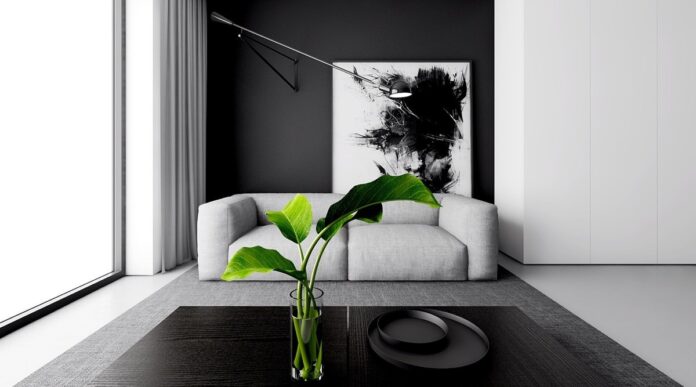
Monochrome design isn’t about limitation – it’s about refinement. When carefully balanced, black, white, and gray create interiors that are modern, calming, and deeply stylish. By adding texture, layering shades, and choosing accents wisely, you can transform your home into a space that feels both sleek and livable.
For anyone considering a redesign, monochrome is a safe yet powerful direction – one that delivers sophistication today and endures for years to come.

